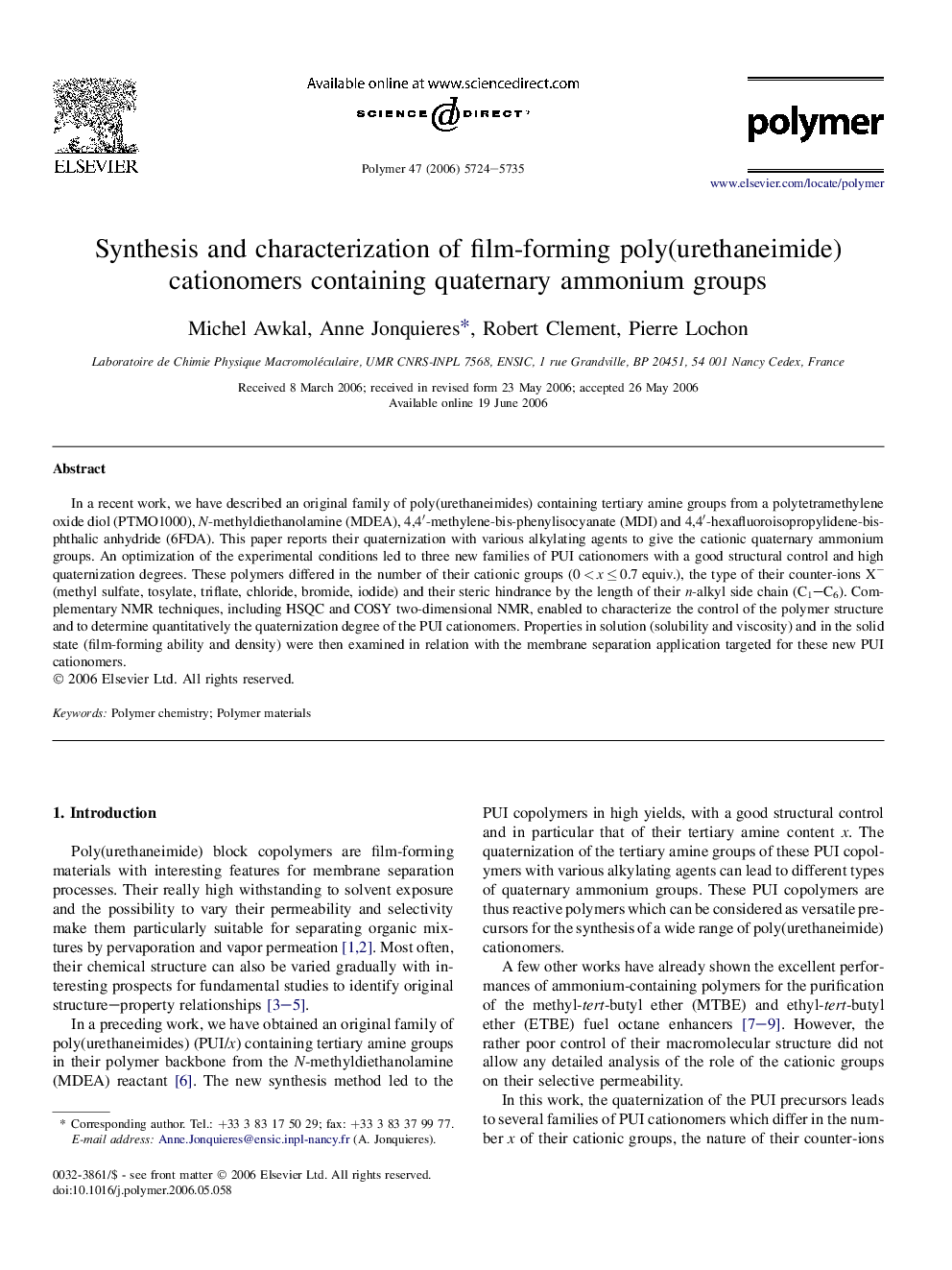| Article ID | Journal | Published Year | Pages | File Type |
|---|---|---|---|---|
| 5190633 | Polymer | 2006 | 12 Pages |
Abstract
In a recent work, we have described an original family of poly(urethaneimides) containing tertiary amine groups from a polytetramethylene oxide diol (PTMO1000), N-methyldiethanolamine (MDEA), 4,4â²-methylene-bis-phenylisocyanate (MDI) and 4,4â²-hexafluoroisopropylidene-bis-phthalic anhydride (6FDA). This paper reports their quaternization with various alkylating agents to give the cationic quaternary ammonium groups. An optimization of the experimental conditions led to three new families of PUI cationomers with a good structural control and high quaternization degrees. These polymers differed in the number of their cationic groups (0 < x â¤Â 0.7 equiv.), the type of their counter-ions Xâ (methyl sulfate, tosylate, triflate, chloride, bromide, iodide) and their steric hindrance by the length of their n-alkyl side chain (C1-C6). Complementary NMR techniques, including HSQC and COSY two-dimensional NMR, enabled to characterize the control of the polymer structure and to determine quantitatively the quaternization degree of the PUI cationomers. Properties in solution (solubility and viscosity) and in the solid state (film-forming ability and density) were then examined in relation with the membrane separation application targeted for these new PUI cationomers.
Keywords
Related Topics
Physical Sciences and Engineering
Chemistry
Organic Chemistry
Authors
Michel Awkal, Anne Jonquieres, Robert Clement, Pierre Lochon,
